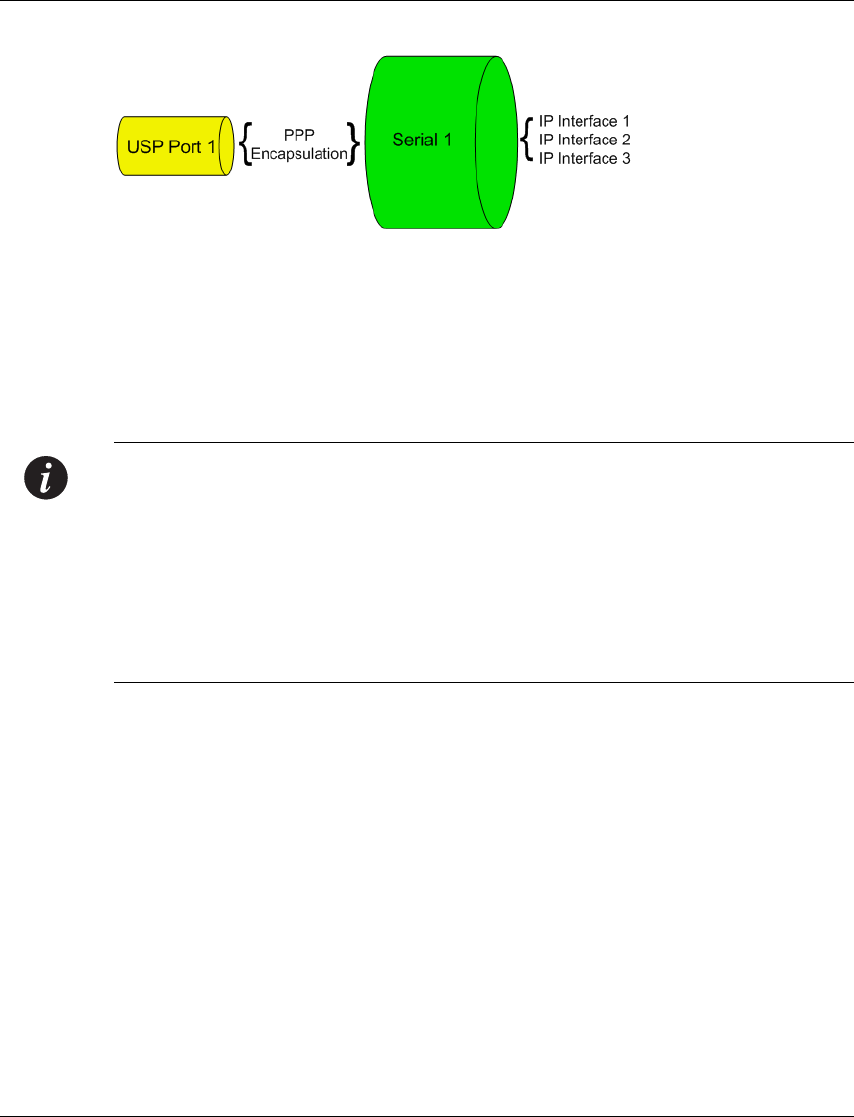
Chapter 4 Operational Concepts and Configuration Examples
34 Avaya X330WAN User’s Guide
Figure 4.4 USP Port with PPP Encapsulation
• PMI (Primary Management Interface) - This is a unique Layer 3 interface that
can be configured over any Layer 2 interface.
The PMI is the X330WAN management interface, through which the
X330WAN’s management applications access the device. The PMI is used when
downloading software or opening an Embedded Web session to X330WAN. In
both cases, a route should exist between the TFTP server or the management
station and the PMI IP address.
Note: The first IP interface created in X330WAN automatically becomes the PMI. It
is recommended to configure the Loopback interface as the first Layer 2 interface
and to configure an IP interface on it. After the PMI is configured, the following
message appears:
The primary management interface has changed.
For this change to take effect, you need to copy running-config
startup-config and then reset the device.
Enter the copy running-config startup-config and reset commands at this
stage.
You can not delete a PMI Layer 3 interface unless it is the last interface configured,
or unless the PMI function is first assigned to another IP interface.
• Supporting an End point in Frame Relay Point to Multi-point Topology -
X330WAN supports Point-to-Point Frame Relay connections. To enable you to
use X330WAN as an end-point in a Point to Multi-Point (PTMP) topology, it
supports Inverse ARP replies, and responds to Inverse ARP queries received on
the Frame Relay Sub-interfaces with proper Inverse ARP replies.
When you connect X330WAN as an end-point in a Point to Multi-Point (PTMP)
configuration, manually increase the OSPF timers to suit this topology using the
ip ospf network point-to-multipoint command from the Interface Serial
context. This command increases the OSPF Hello and Dead Intervals to 30 and
120 seconds respectively.


















